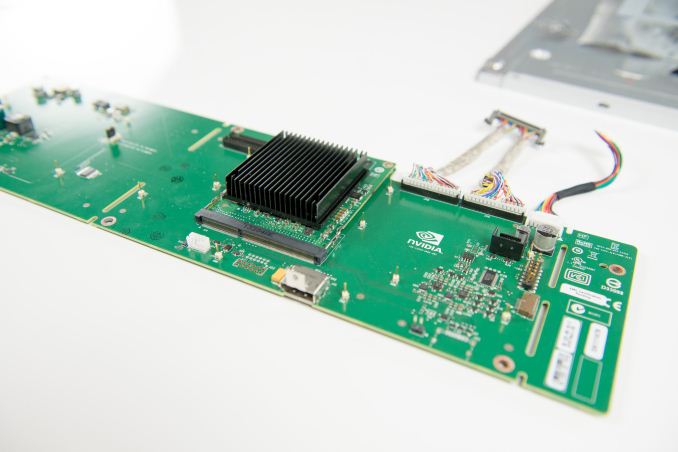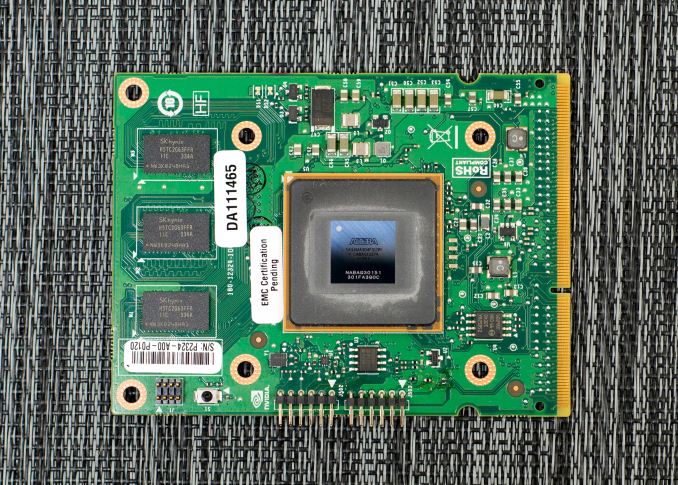NVIDIA G-Sync Review
by Anand Lal Shimpi on December 12, 2013 9:00 AM ESTFinal Words
After spending a few days with G-Sync, I’m just as convinced as I was in Montreal. The technology, albeit a relatively simple manipulation of display timing, is a key ingredient in delivering a substantially better gaming experience.
In pathological cases the impact can be shocking, particularly if you’re coming from a 60Hz panel today (with or without v-sync). The smoothness afforded by G-Sync is just awesome. I didn’t even realize how much of the v-sync related stutter I had simply come to accept. I’d frequently find a scene that stuttered a lot with v-sync enabled and approach it fully expecting G-Sync to somehow fail at smoothing things out this time. I always came away impressed. G-Sync also lowered my minimum frame rate requirement to not be distracted by stuttering. Dropping below 30 fps is still bothersome, but in all of the games I tested as long as I could keep frame rates north of 35 fps the overall experience was great.
In many situations the impact of G-Sync can be subtle. If you’re not overly bothered by tearing or are ok with v-sync stuttering, there’s really nothing G-Sync can offer you. There’s also the fact that G-Sync optimizes for a situation that may or may not be so visible 100% of the time. Unlike moving to a higher resolution or increasing quality settings, G-Sync’s value is best realized in specific scenarios where there’s a lot of frame rate variability - particularly between 30 and 60 fps. Staying in that sweet spot is tougher to do on a 1080p panel, especially if you’ve already invested in a pretty fast video card.
If you’re already running games at a fairly constant 60 fps, what G-Sync will allow you to do is to crank up quality levels even more without significantly reducing the smoothness of your experience. I feel like G-Sync will be of even more importance with higher resolution displays where it’s a lot harder to maintain 60 fps. Ideally I’d love to see a 2560 x 1440 G-Sync display with an IPS panel that maybe even ships properly calibrated from the factory. I suspect we’ll at least get the former.
There's also what happens if game developers can assume the world is running on displays with variable refresh rates. All of the sudden targeting frame rates between 30 and 60 fps becomes far less of a tradeoff.
NVIDIA hasn’t disclosed much about G-Sync pricing, although ASUS has already given us a little guidance. The VG248QE currently sells for $280 on Newegg, while the upcoming G-Sync enabled flavor will apparently be sold for $400. The $120 premium can be a tough pill to swallow. A 40% increase in display cost is steep, which is another reason why I feel like NVIDIA might have a little more success pushing G-Sync as a part of a higher end display. On the flip side NVIDIA could easily get those costs down by migrating from an FPGA to an ASIC, although to justify that move we’d have to see pretty broad adoption of G-Sync.
Some system integrators will be selling the aftermarket upgraded VG248QE between now and CES, but you can expect other displays to be announced over the coming months. NVIDIA still hasn't figured out if/how it wants to handle end user upgrades for those who already own VG248QE displays.
I feel like NVIDIA is slowly but surely assembling a bunch of components of a truly next-generation gaming experience. With all of the new consoles launched, the bar is set for the next several years. PCs already exceed what consoles are capable of in terms of performance, but the focus going forward really needs to be on improving ease of use as well as the rest of the experience. Things like GeForce Experience are a step in the right direction, but they need far more polish and honestly, integration into something like Steam. G-Sync just adds to the list. For PC gaming to continue to thrive, it needs to evolve into something even more polished than it is today. It’s not enough to just offer higher resolution and a better looking image than what you can get on other platforms, it’s very important to provide a smoother and more consistent experience as well. G-Sync attempts to and succeeds at doing just that.
With G-Sync enabled, I began to expect/demand more visually from my games. Aliasing and other rendering imperfections were far more pronounced now that a big portion of stuttering was removed. G-Sync isn't the final solution, but rather the first on a long list of things that need improving. There are other use cases for G-Sync outside of gaming as well. Streaming video where bandwidth constraints force a variable frame rate is another one I’ve heard passed around.
Although G-Sync is limited to NVIDIA hardware (GeForce GTX 650 Ti Boost or greater), the implementation seems simple enough that other manufacturers should be able to do something similar. That’s obviously the biggest issue with what we have here today - it only works with NVIDIA hardware. For die hard NVIDIA fans, I can absolutely see a G-Sync monitor as being a worthy investment. You might just want to wait for some more displays to hit the market first.












193 Comments
View All Comments
colonelclaw - Thursday, December 12, 2013 - link
Do current games run fine or do they need to be patched to be 'G-Sync aware'?Traciatim - Thursday, December 12, 2013 - link
Most games shouldn't even notice.Hixbot - Friday, December 27, 2013 - link
True, but you if you have G-sync, you are best to turn off Triple Buffering in your game (turn off double buffering too). Some games do no offer the user the ability to disable tripple bufferingzsero - Thursday, December 12, 2013 - link
Very nice, detailed article! One thing I missed is how it compares with nVidia's sync technology found on Quadro cards, which can sync to an external SDI source.Can you explain a bit about it, and how does that compare to the new G-Sync? It has been around for a couple of years now but only on high-end Quadro cards.
Kevin G - Thursday, December 12, 2013 - link
I think nVidia/AMD need to do a round of cross licensing. AMD would get G-Sync + PhysX while nVidia would get Mantle and an AMD x86 CPU core to build an nVidia branded SoC. An enthusiast can dream can't they?extide - Thursday, December 12, 2013 - link
That would be nice but Intel would never let the nVidia x86 part happen, heh.Kevin G - Friday, December 13, 2013 - link
Well AMD has opened to using other IP in a custom SoC. So actually it wouldn't be an nVidia x86 core but rather AMD who also would be responsible for the overall layout of the SoC. Of course, individual components in the SoC, (mainly graphics) would be nVidia IP.Of course this would never happen given that AMD and nVidia are absolutely fierce competitors with each other along with Intel (a three way stand off of hate). Like I said though, one can dream.
Montago - Thursday, December 12, 2013 - link
Any chance you might compare this to LucidLogix VirtuMVP VirtualVsync ??I've been using VirtuMVP for some time, and although it might not be as perfect as GSync, it does offer a similar feature of syncing the dislpay while letting the GPU run like its VSyncOFF = better gaming response at 60hz refreshrate...
Arbie - Thursday, December 12, 2013 - link
Were those wood screws holding the panel on?bondfc11 - Thursday, December 12, 2013 - link
Right?!? I think its weird that the component parts are held to the panel with TAPE! High end approach there.